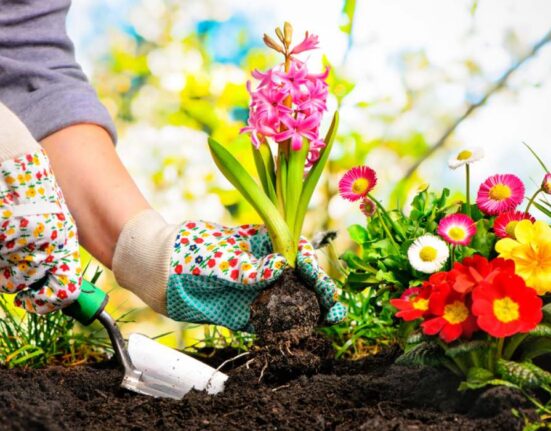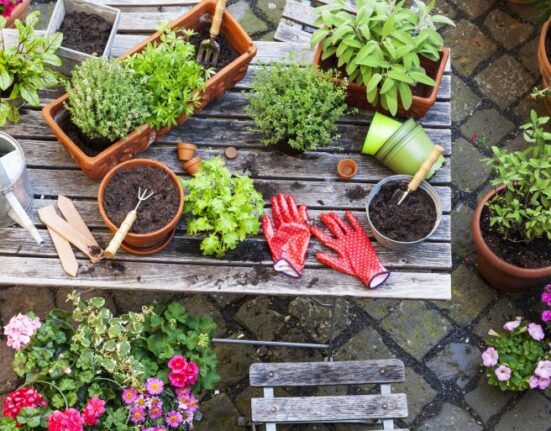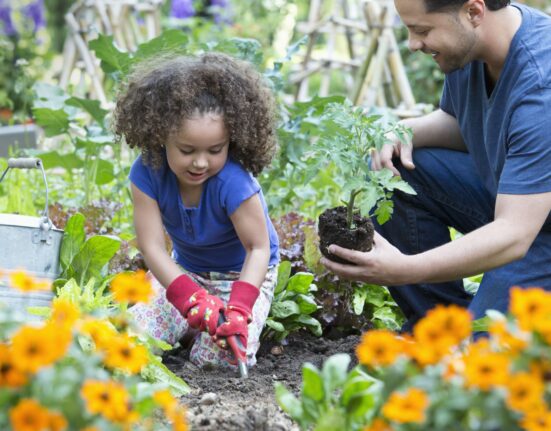Whether you’re a city dweller or planning to move to the countryside, having your own garden is a great way to relax and spend time with family and friends. It’s also an excellent natural filter, purifying the air while providing nutrients for plants and keeping pests at bay. So how do you design your home garden? Read on to learn more about planting zones, edging flower beds, trellises and other essentials.
Location, location, location
When you’re designing your home garden, be sure to start by thinking about the location and the climate. Decide where your garden will be and what the surrounding landscape will look like. Is there space for something massive or is it best to limit the size of your garden? Is there room for a pergola, pool, or some other fun feature?
Once you have these basics figured out, you can start to think about your layout. There are many different ways to design your home garden, but there are some general principles that all gardens should follow. These include functional layouts, low maintenance, and organised spaces. Functional gardens are outdoor rooms, where people can relax and enjoy nature. You can also read our article, How to Design a Functional Garden.


Learn about your climate and the basics of gardening
If you’re planning on growing vegetables, you’ll want to know your zone’s average temperatures and precipitation. You can also find out how often you should water your plants. Knowing these basics is essential because pests, weather conditions, and plant health can vary greatly from one location to another. If you’re hoping to grow flowers, you’ll also want to know your zone’s average daily temperatures and hours of sunlight. Knowing these details will help you choose the best plants for your area, keeping in mind that flower colors, scent, and growth patterns will also vary from region to region.
Know your soil: What to add and what to avoid
Understanding what type of soil your home garden will be located in is crucial. All soils have different levels of nutrients, moisture, and drainage. Knowing which nutrients your plants need in order to thrive will help you to avoid over- or under-watering your plants. You can also choose to add compost to your soil if it’s lacking some nutrients. However, make sure that you follow the instructions on the container you’re using, as too much compost can damage roots.
Choose plants that suit your zone and grow them correctly
Once you’ve got your location and climate figured out, you can start to think about which plants would be best for your home garden. You’ll want to choose plants that are native to your region and that are drought tolerant. You’ll also want to make sure that the plants you choose have room to grow and that they’re not being crowded out by other plants.
Make sure to water your plants regularly and be sure not overwater them. This can lead to root rot, a condition caused by an imbalance in moisture levels between the roots and the rest of the plant. You can also make your plants more drought-tolerant by planting them deeper, using mulch, and watering them during the night when it’s cooler.
Edging flower beds: Basics you need to know
As you walk around your home garden, you’ll quickly notice that the flower beds are the first thing people notice when they walk into your front door. That’s because the flower bed is the first thing people see when entering your home. If you live in a sunny region, you’ll want to choose a color that matches your home and your landscape. You’ll also want to choose flowers that bloom throughout the summer, staying in bloom for at least three weeks.
If you have milder climates, you can choose flowers that bloom for a shorter period of time. You can plant flowers in flower beds, border gardens, beds against the house, or in any area that you want to brighten up. You can even add flowers to pathways and other areas where they’ll be seen by passersby.
Trellises for ramped-up edginess
A trellis is a handy addition to any home garden. You can use it to create a vertical garden or create a climbing surface indoors. You can also use it to grow fruit and vegetables. When choosing a trellis, you’ll want to think about the width you want it to be, as well as the height. You can also think about the material you want to use. Wooden trellises will last longer, but they’re more expensive than most other types of trellises.
Staking tall flowers: Need help?
If you’re planting a tall flower, like a sunflower, you’ll want to make sure that it has strong, sturdy support. To help your plant, place heavy rocks or bricks on the areas of the stem that are bending. You can also use wire to support tall flowers. The wire will allow you to easily move the trellis around, should you need to move it to a better spot. However, using wire is a safety hazard that could lead to serious injury or even death if someone were to trip or fall while using it.
Plant desert gardens carefully!
Planting desert gardens is a great way to bring the outside inside. However, you’ll want to take precautions when planting desert plants, as they’re not accustomed to the wet climate of most home gardens. Choose plants that are adapted to dry, hot conditions, and make sure to water them regularly. You can also make your plants more tolerant to water by planting them deeper and using mulch.
Conclusion
Designing and maintaining a home garden is an excellent way to nurture your plants and create a beautiful, healthy space. You can grow your own food, create natural filters, and enjoy the outdoors all from the comfort of your own home. We hope this guide has helped you to design your own home garden! Now that you’re equipped with all of the knowledge you need, it’s time to get planting! There are thousands of varieties of plants that are great for home gardens, so it’s worth taking the time to find the right ones for your climate and soil conditions.









Leave feedback about this